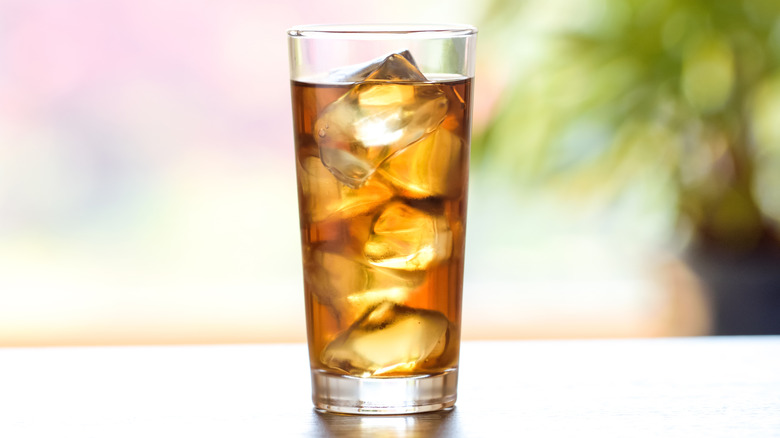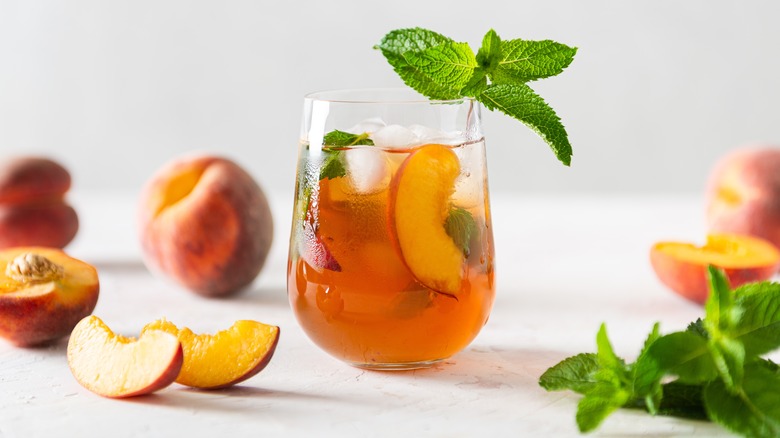The Best Flavors To Elevate Iced Oolong Tea
Technically speaking, oolong tea is any tea in the wide category between black and green tea classifications. As such, some fans describe the characteristics of oolong tea as black-meets-green tea, simultaneously deep yet light. This is due to the fact that oolong tea leaves are partially oxidized, somewhere between 8% and 85% (compared to black tea, which is fully oxidized, and green tea, which is hardly oxidized at all). For this reason, oolong tea is also a highly versatile, highly flavorful tea with diverse notes based on how and for how long the leaves were oxidized. In short, if you've been sleeping on oolong tea, it's time to wake up.
Oolong (aka black dragon tea) leaves come from the Camellia sinensis plant, the same plant from which black and green teas are made. As such, processing plays a huge role in the final flavor. In the same way, the ingredients you select to add to your iced oolong tea brew can make all the difference in the world for a satisfying sip and dimensional flavor. If your go-to pitcher of iced black tea is starting to get a little boring, we feel you — and we've rounded up a few ideas to help accentuate your brew's unique flavor notes and craft a complex cup. Considering oolong tea is the midpoint between black and green teas, home brewers have the liberty to emphasize the sweet or the savory notes with their ingredient add-ons.
Take a cue from global ingredients
For iced oolong tea, one solid flavor-packed facelift is freshly-grated ginger and honey. Go earthy and toss in an herb bundle or some fresh edible flowers like lavender, lemongrass, rose hips, orange blossoms, or violets. If you're feeling wild, up the ante and cut up some fresh peach chunks, plus a sprig of mint leaves. You could use this same fresh-fruit-and-herbs technique with other flavor combinations, as well. Watermelon and basil, lemon and eucalyptus leaves, or pear and bergamot are all knockout pairings. All of these ingredients could be added either to large batches or individual cups of tea. You could even make a pitcher of regular oolong tea and adjust each serving with a different kick of flavor.
For more inspiration, take a cue from oolong's global fanbase. While oolong is admittedly a less popular tea variety in the U.S., there's a trove of fastidious sippers in China, India, Taiwan, Vietnam, Sri Lanka, and Kenya. It is even quite popular in the United Kingdom and Poland. Let geography be your culinary guide and implement a few regional ingredients. Jasmine flowers from China, smoky-floral cardamom pods from India, fresh coconut from Taiwan, or star anise or fermented chili paste (or both) from Vietnam would all make interesting and appetizing additions to elevate your homemade iced oolong tea.

